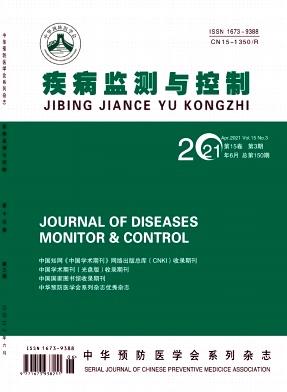术后创面铜绿假单胞菌抗药谱及β-内酰胺酶耐药基因的检测
引用次数: 0
摘要
铜绿假单胞菌的传播很难用消毒剂和抗生素控制,因为铜绿假单胞菌分离株具有耐药性。研究了术后伤口感染铜绿假单胞菌的药敏特征,并检测了其延伸谱β-内酰胺酶(ESBL)耐药基因。伤口拭子在MacConkey培养基上培养,在Cetrimide琼脂培养基上继代培养。根据其宏观和微观特征以及16SrRNA进行鉴定。采用圆盘扩散技术检测菌株的药敏谱,并在氨氧克虫存在的条件下,在Mueller Hinton琼脂平板上培养菌株,确定其β -内酰胺(ESBL)产生菌。共检出阳性菌株40株,其中耐多药菌株21株。质粒固化前,链霉素、头孢他啶、奥格门汀、庆大霉素的耐药率最高,分别为80% (n=32)、60% (n=24)、60% (n=24)、60% (n=24)。然而,质粒固化后,结果显示抗性降低。链霉素和头孢他啶的耐药性分别从80%降低到25%和从60%降低到12.7%,表明耐药性是质粒介导的。铜绿假单胞菌F23和铜绿假单胞菌S15分离株均具有plcH和bla PER基因,条带扩增大小分别为307bp和520bp。质粒固化后的药敏模式显示,45%的菌株产生β -内酰胺酶,即40株菌株中有18株对所有β -内酰胺类抗生素均无活性。本文章由计算机程序翻译,如有差异,请以英文原文为准。
Antimicrobial susceptibility profile and detection of extended spectrum β-lactamase resistance genes in pseudomonas aeruginosa isolated from post-operative wounds
The spread of Pseudomonas aeruginosa is difficult to control with disinfectants and antibiotics due to the resistance found in P. aeruginosa isolates. The study investigated the susceptibility profile and detect extended spectrum β-lactamase (ESBL) resistance genes in the Pseudomonas aeruginosa isolated from post-operative wound infection. Wound swabs were cultured on MacConkey and sub-cultured on Cetrimide agar. The isolates were identified base on their macroscopic and microscopic characteristics as well as 16SrRNA. Disc diffusion technique was used to check the susceptibility profile of the isolates and the extended spectrum beta-lactam (ESBL) producers were determined by growing the isolates on Mueller Hinton agar plate in the presence of amoxyclav. 40 positive isolates were recovered in the study with 21 isolates been multi-drug resistance (MDR). Before plasmid curing, Streptomycin, ceftazidime, Augmentin, and Gentamicin has the highest resistance rate of 80% (n=32), 60% (n=24), 60% (n=24) and 60% (n=24) respectively. However, after plasmid curing, the result showed reduction in resistance rates. Streptomycin and ceftazidime showed high reduction in resistance from 80% to 25% and from 60 to 12.7% respectively indicating that resistance was plasmid-mediated. Pseudomonas aeruginosa F23 and Pseudomonas aeruginosa S15 isolates shown to possess both the plcH and bla PER genes with bands amplicons size of 307bp and 520bp respectively. Antibiotic susceptibility pattern after plasmid curing showed that 45% of the isolates produces beta-lactamase enzymes i.e., 18 out of 40 isolates were inactive to all beta-lactam group of antibiotics.
求助全文
通过发布文献求助,成功后即可免费获取论文全文。
去求助
来源期刊
自引率
0.00%
发文量
5934
期刊介绍:
"Journal of Diseases Monitor and Control" was founded in 2007 and is a series of journals of the Chinese Association of Preventive Medicine. It was initially sponsored by the People's Hospital Affiliated to Inner Mongolia Medical University. In 2018, it was officially changed to Inner Mongolia Medical University with the approval of the Central Propaganda Department. It highlights the characteristics of "monitoring" and "control", focusing on the fields of preventive medicine, public health, epidemiology, etc., while taking clinical medicine into consideration. It publishes advanced theories, technical methods, measures and experiences in all the above aspects.

 求助内容:
求助内容: 应助结果提醒方式:
应助结果提醒方式:


